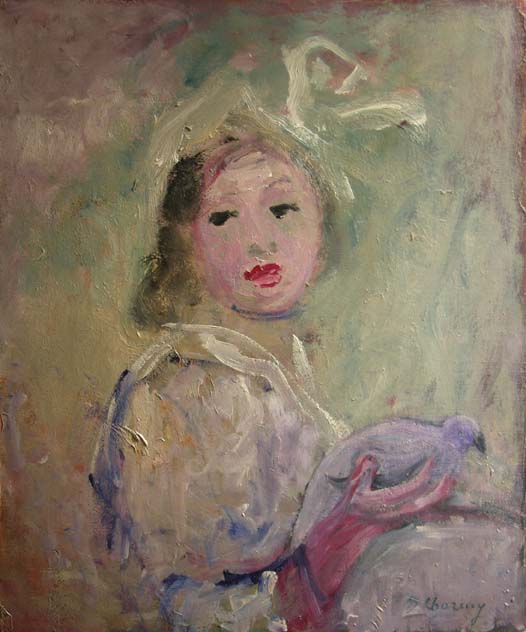Emilie Charmy
1877-1974
Emilie Charmy was a prolific painter in France during the early and
mid – twentieth century, despite the marginalization of education
and resources for women artists at the time.
In the late 19th century enrollment was closed to women at l’École
des Beaux-Arts so Charmy first received private lessons from artist
Jacques Martin in Lyon. Martin encouraged her singing career as well,
which warranted a performance opportunity in New Orleans, however her
brother forbade it. In 1902 she moved to St. Cloud on the outskirts
of Paris with her brother where he consistantly encouraged Charmy to
continue painting. They eventually moved to Paris where Charmy settled
into what would become her home and studio for the following seventy
years.
In 1904 Charmy exhibited for the first time at the Salon des Indépendants
and in 1905 at the Salon d’Automne. She quickly gained recognition
and acclaim among her peers including the reputable dealer Berthe Weil,
who helped Charmy launch her career. Critic Roland Dorgelès praised
Charmy by writing that she “… sees like a woman and paints
like a man.” Though today considered an extremely gendered and
offensive critique was at the time an outstanding compliment.
An admirer, Georges Bouche, was so struck by Charmy’s work he
insisted on meeting the artist under the assumption she was a man. The
two became well acquainted, eventually married and had a son, Edmond.
Charmy’s fame and exposure grew as she had several solo exhibitions
and participated in a group show at the esteemed Galerie d’Oeuvres
d’Art as well as the 1913 Armory Show. She attracted the attention
of patron Compte Etienne de Jouvencel who arranged an exhibition for
Charmy at the Galerie Styles alongside Ingres, Delacroix, Corot, Manet,
Renoir, Matisse, Cèzanne, Derain, Rouault and Picasso.
The oeuvre in which Charmy worked ranged from still life, figures and
nudes to political portraiture. Though most subject matter is deemed
‘feminine’ her technique, stylization and aesthetic demand
is highly masculine. She was acclaimed by critic Louis Vauxcelles in
1921 as ‘one of the most remarkable women [artists] of our time.’
She became identified with and established alongside Suzanne Valadon,
Jacqueline Marval, Marie Blanchard, Marie Vassiliev and Sonia Delauney.
Private collections hold the majority of Charmy’s work though
some exist in the Paris Museum of Modern Art, the Georges Pompidou Centre
at Beaubourg, the Musée d el’Orangerie, the Tel-Aviv Museum
and the Museum of Lyon.
She painted well into her seventies and died in 1974 at the age of ninety-four.
In 1980 her son, Edmond Bouche, wrote of her life and work for an exhibition
by the Patrick Seale Gallery in London.
|

